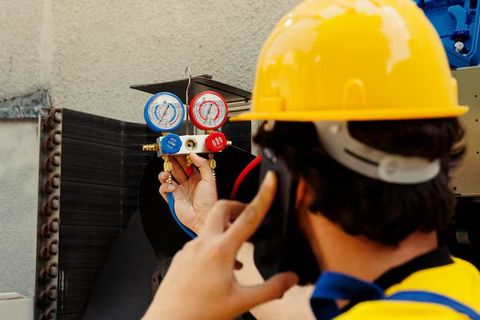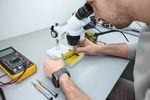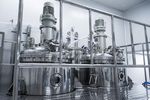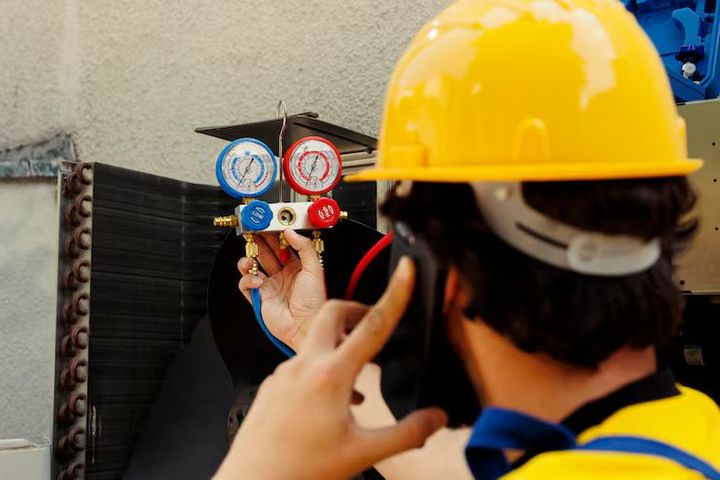
Discover Helium Leak Detectors: Detailed Information, Facts, and Practical Knowledge
Helium leak detectors are specialized instruments used to identify extremely small leaks in sealed systems by using helium gas as a tracer. This method exists because many industrial components—such as pipelines, refrigeration systems, medical devices, aerospace parts, and vacuum chambers—must maintain very precise levels of pressure integrity. Even a tiny leak can affect performance, safety, and long-term reliability.
Helium is preferred because it is non-toxic, chemically inert, and has a very small atomic size, allowing it to pass through the smallest openings. It is also rare in the atmosphere, making detection easier and more accurate. Helium leak detection grew out of early developments in vacuum technology and nuclear physics laboratories, eventually becoming a global standard for high-precision leak testing methods.
Modern helium leak detectors typically work using mass spectrometry, identifying helium molecules that escape from or enter a system. These detectors help industries verify that products and equipment meet strict quality control standards, safety guidelines, and environmental compliance requirements.
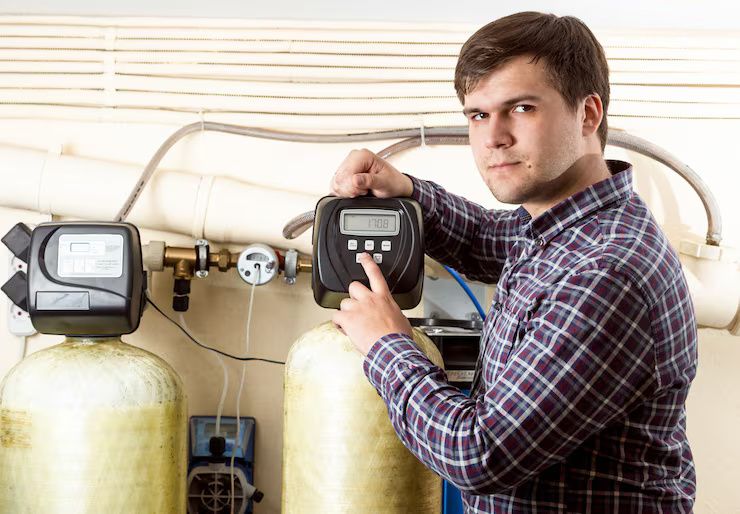
Importance
Helium leak detection is important because leaks—no matter how small—can lead to safety hazards, reduced efficiency, equipment failure, or contamination. This topic matters today due to the increasing demand for high-performance systems across fields such as manufacturing, energy, aerospace, automotive engineering, and healthcare.
Industries rely on helium leak detectors for several reasons:
• Protection of industrial safety systems
Leaks in pressure vessels, pipelines, or sealed chambers can introduce risks such as contamination, fluid loss, or hazardous escape of gases. Detecting and resolving leaks helps maintain safe operations.
• Compliance with quality control standards
Modern manufacturing often requires extremely low leak rates. Many global certification bodies specify allowable leak thresholds for components used in medical devices, refrigeration systems, and semiconductor equipment.
• Support for energy-efficient and environmental technologies
Refrigeration and HVAC systems use refrigerants that must not escape into the environment. Accurate leak detection ensures that equipment meets environmental regulations and reduces emissions.
• Ensuring reliability in high-precision systems
Aerospace, nuclear, and research applications depend on vacuum technology, where even microscopic leaks can disrupt experiments or cause mission failures.
• Improving long-term equipment performance
Identifying leaks early helps prevent damage, reduce system downtime, and maintain operational stability.
In short, helium leak detectors help solve the problems of pressure loss, product failure, contamination, environmental impact, and safety risks.
Recent Updates
The field of helium leak detection has seen several trends and developments in the last year, driven by improvements in vacuum technology, sustainability goals, and the demand for advanced quality assurance.
• Increased focus on helium-efficient testing (2024–2025)
Due to global concerns about helium availability, manufacturers introduced technologies that reduce helium consumption, including recovery systems and low-flow test configurations. These updates help industries maintain testing accuracy while conserving resources.
• Automation in leak detection systems (2024)
Automated robotic arms and AI-assisted detection algorithms became more common for high-volume industries. These systems improve consistency and reduce the chance of human error during testing.
• Growth in semiconductor and electric-vehicle production (2024–2025)
The expansion of semiconductor fabrication plants and EV battery manufacturing increased demand for ultra-high sensitivity leak detection methods to ensure clean, contamination-free environments.
• Updates in vacuum pump integration (late 2024)
New hybrid vacuum pump technologies improved response times and detection sensitivity, making helium mass spectrometers more efficient in laboratory and industrial settings.
• Rising adoption of portable leak detectors (2024–2025)
Portable and handheld models gained popularity because they are easier to use in field conditions, especially in energy, HVAC, and mechanical maintenance environments.
These developments reflect how the industry is adapting to new technical demands and sustainability concerns.
Laws or Policies
Helium leak detection is influenced by the regulations and standards that govern equipment safety, environmental protection, and industrial manufacturing processes. While specifics vary by country, several policy areas commonly affect helium-based leak testing:
• Environmental regulations
Leak detection is widely used to ensure that systems containing refrigerants, compressed gases, or hazardous substances meet environmental standards. Many countries require regular leak checks in refrigeration, HVAC, and industrial gas systems to reduce emissions.
• Pressure equipment and vessel standards
Industries must comply with regulations related to testing pressure integrity. National and international standards often specify the acceptable leak rates for equipment used in energy, chemical processing, medical applications, and manufacturing.
• Worker safety guidelines
Occupational safety rules require industries to ensure that sealed systems used in workplaces are not leaking gases or chemicals that could lead to hazards. Helium detection supports compliance by verifying equipment safety.
• Technical standards for manufacturing quality
Organizations often follow standards that outline methods for leak testing, calibration, and acceptable thresholds. These guidelines influence the use of helium mass spectrometry and vacuum testing methods.
Policies ensure that helium leak detectors are used properly and that industries maintain safety, environmental responsibility, and reliable performance.
Tools and Resources
Several tools and resources support understanding, monitoring, and applying helium leak detection. These include:
• Leak calculation charts
Used to estimate leak rates, vacuum levels, and pressure changes in sealed systems.
• Sensitivity comparison tables
Helpful for selecting between helium mass spectrometry, pressure decay tests, and other detection methods based on required accuracy.
• Industrial standards references
Organizations publish detailed testing procedures used across industries to ensure quality and safety.
• Digital monitoring tools
Some platforms provide real-time leak test data analysis and help improve testing accuracy.
• Training materials and educational guides
Many engineering institutes and technical associations offer resources that explain leak testing principles, tracer gas behavior, vacuum technology basics, and system calibration requirements.
These tools help technicians, engineers, and students understand the complexities of leak detection and apply best practices in various applications.
FAQs
1. Why is helium used for leak detection instead of other gases?
Helium is used because it is inert, non-reactive, safe to handle, and has very small atoms that pass through tiny leaks. It is also naturally scarce in the atmosphere, making it easier to detect with mass spectrometers.
2. What types of systems typically require helium leak testing?
Industries use helium leak detection for refrigeration units, vacuum chambers, automotive components, semiconductor fabrication equipment, laboratory instruments, medical devices, fluid systems, and aerospace components where even tiny leaks can affect performance.
3. What is considered a “high-sensitivity” leak detector?
A high-sensitivity detector can identify extremely small leak rates, often measured in the range of 10⁻⁹ mbar-L/s. These devices are commonly used in scientific research, aerospace, and semiconductor production.
4. How does a mass spectrometer detect helium?
A helium mass spectrometer pulls gas into a vacuum chamber and analyzes it based on the mass-to-charge ratio of the molecules. Helium ions are detected and measured, indicating the presence and size of a leak.
5. Can helium leak detectors be used outdoors or in field conditions?
Yes, many portable detectors are designed for field use. They are often applied in HVAC inspections, pipeline testing, mechanical maintenance, and energy systems, where quick identification of leaks is necessary.
Conclusion
Helium leak detectors play a key role in ensuring precision, safety, and environmental protection across modern industries. They exist because many systems must maintain strict pressure integrity, and helium provides an accurate and reliable way to identify even the smallest leaks.
Recent developments—including helium conservation techniques, automation, portable testing tools, and integration with advanced vacuum technology—continue to shape the field. Regulations related to environmental protection, worker safety, and manufacturing quality further highlight their importance.
Understanding how helium leak detectors work, where they are used, and the standards that govern them helps professionals, students, and technical teams improve system reliability and maintain high safety and quality levels. This knowledge supports better decisions in engineering, industrial operations, and scientific research.

